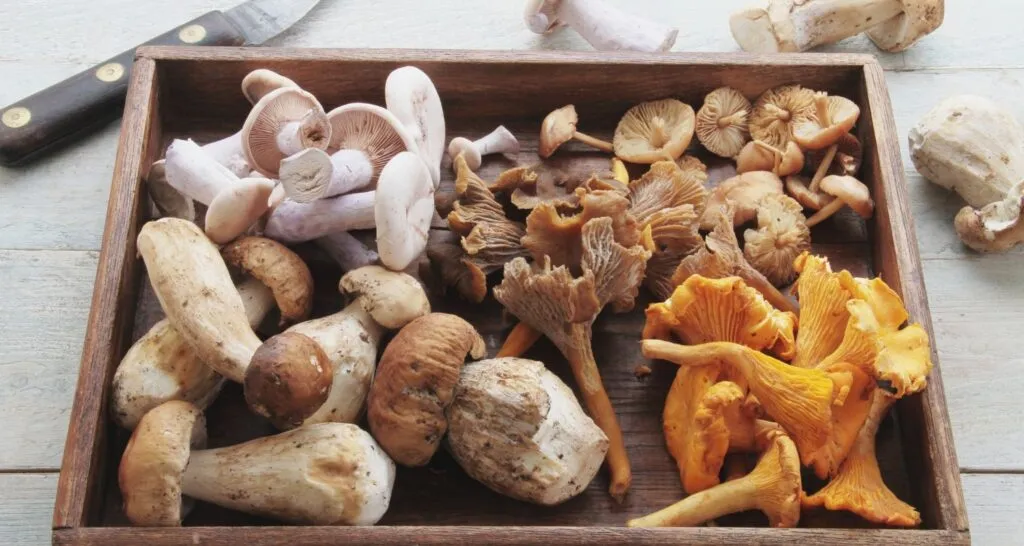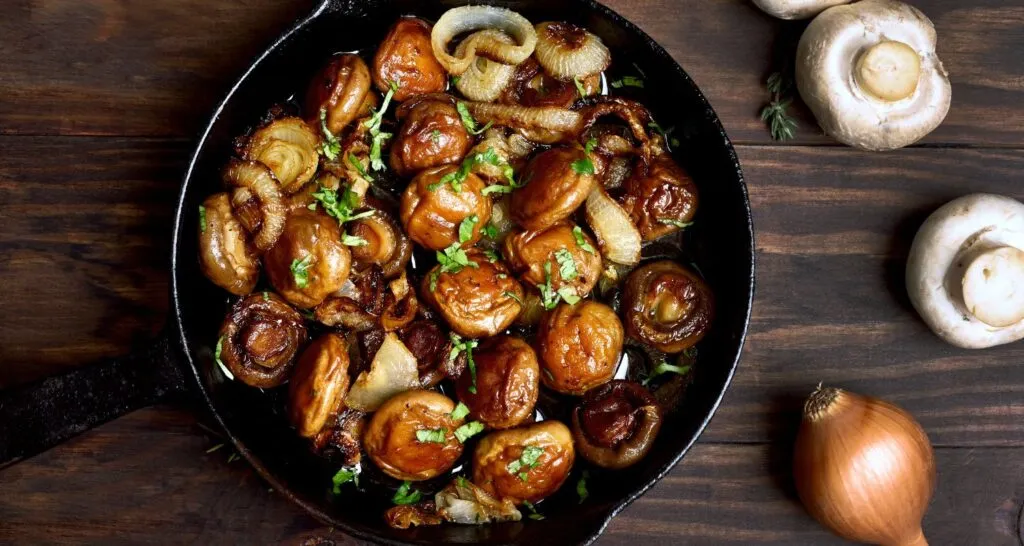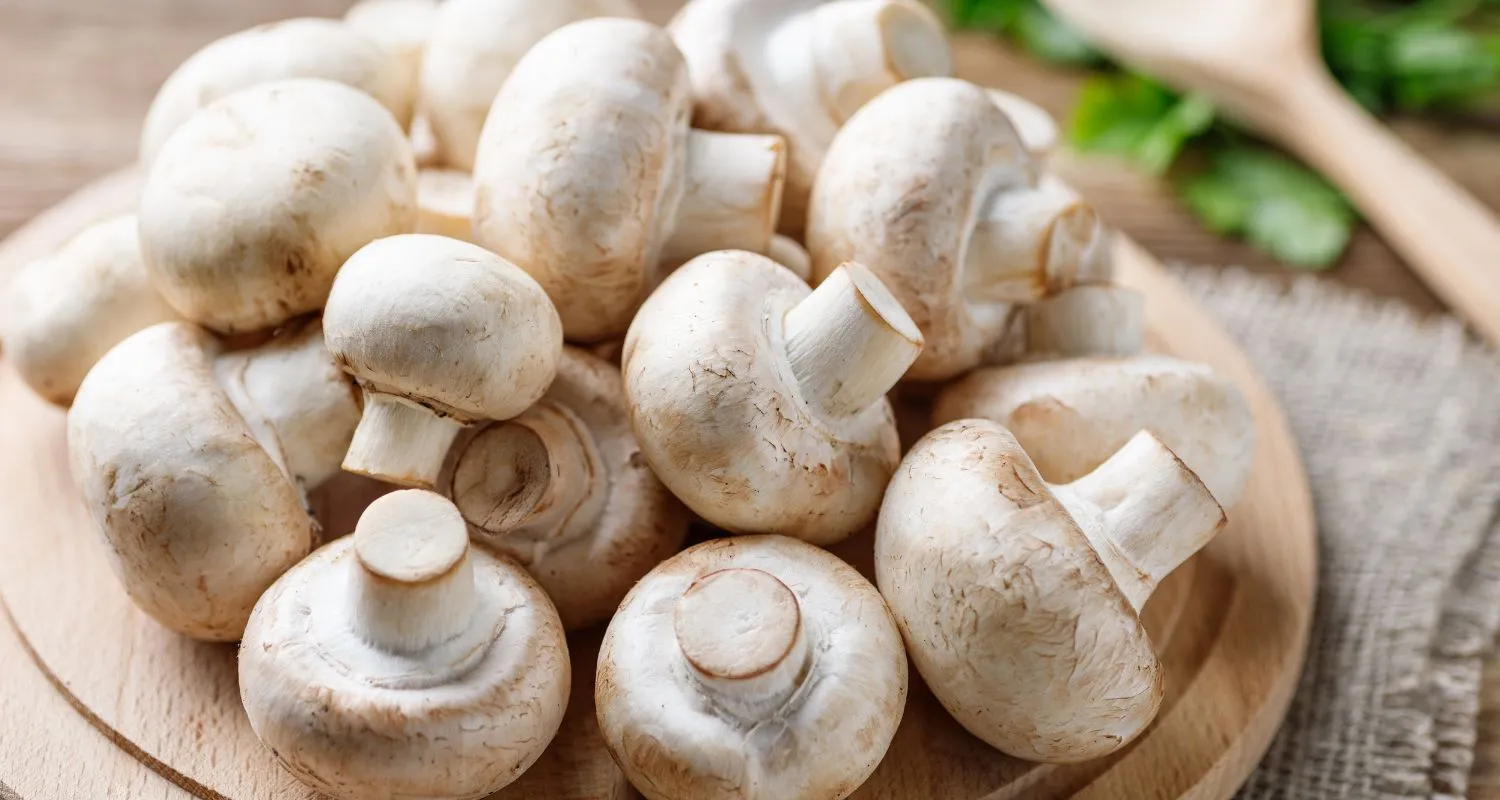Mushrooms, with their earthy flavors and versatile culinary uses, have become a staple in kitchens worldwide. Yet, how often have we found ourselves questioning their freshness upon discovering them tucked away in the fridge? Understanding the shelf life of mushrooms is essential for both safety and taste. This article dives deep into the world of mushrooms, exploring not just their longevity but also the best practices for storage, signs of spoilage, and much more. Armed with this knowledge, you’ll never have to second-guess whether your mushrooms are still good to use or if it’s time to let them go.
Introduction to Mushroom Shelf Life
Mushrooms, those delightful additions to any dish, require a bit of know-how when it comes to their shelf life. Have you ever paused, mushroom in hand, pondering whether it’s still good to eat? You’re not alone. In the culinary world, mushrooms hold a special place, offering not just a unique flavor but also a host of nutritional benefits. Yet, their perishability often leads to confusion and waste.
Why Does It Matter?
First off, understanding the shelf life of mushrooms matters for a couple of key reasons. Safety, for one, is paramount. Consuming spoiled mushrooms can lead to foodborne illnesses, something we all want to avoid. Secondly, there’s the matter of taste. Fresh mushrooms can elevate a dish from good to great, whereas old mushrooms might detract from the flavor profile you’re aiming for.
A Closer Look
The shelf life of mushrooms isn’t a one-size-fits-all answer. It varies widely based on factors like the type of mushroom, how it’s stored, and whether it’s fresh, dried, or cooked. This article aims to clear up the confusion, offering you a guide on how to maximize the shelf life of your mushrooms while maintaining their taste and safety.
So, let’s dive in and unravel the mystery of mushroom shelf life, ensuring that the next time you reach for that fungi in your fridge, you’ll know exactly what to expect. Stay tuned, as we’re about to embark on a journey that will change the way you view and utilize mushrooms in your culinary adventures.
Stay with us as we explore the best ways to store your mushrooms, how to tell if they’ve gone bad, and much more. By the end, you’ll be a mushroom storage expert, ready to tackle any fungi-related challenge that comes your way!
Factors Affecting Mushroom Shelf Life
When it comes to mushrooms, not all are created equal. Their shelf life can vary dramatically, influenced by several key factors. Let’s explore what affects the longevity of these fungi favorites and how you can ensure they stay fresh for as long as possible.

Freshness and Type of Mushroom
First up, the type of mushroom plays a crucial role. Cremini, Portobello, Shiitake, each variety has its own clock ticking. Generally, fresh mushrooms have a window of 7 to 10 days in the fridge. But remember, the clock starts ticking the moment they’re harvested.
Storage Conditions and Methods
How you store mushrooms can make or break their shelf life. Temperature, humidity, and even the container you use can influence how long your mushrooms stay fresh. Ideally, keeping them in a cool, dry place is the way to go. But there’s more to it than just popping them in the fridge.
Airflow and Moisture
Mushrooms love a bit of breathing room. Poor ventilation can lead to moisture buildup, which is a surefire way to speed up spoilage. Storing them in a paper bag can help absorb excess moisture and allow for adequate airflow.
Light Exposure
Believe it or not, light can also affect mushroom longevity. Too much light can lead to drying out or even a change in flavor. Keeping them in a darker part of your fridge or pantry can help maintain their quality.
By understanding these factors, you’re well on your way to maximizing the shelf life of your mushrooms. Remember, the key to longevity lies in how you store them. So, next time you bring home some fresh fungi, consider these tips to ensure they last as long as possible. Stay tuned for the next part, where we’ll dive into the various storage methods and their impact on mushroom shelf life. Get ready to become a mushroom storage pro.
Storage Methods and Shelf Life
Mastering the correct storage techniques can greatly enhance the longevity of your culinary fungi, ensuring they remain prime for your next dish. Delving into the optimal preservation methods for various types reveals the significant impact on their durability.
Preserving Fresh Varieties: The Importance of Cooling
The refrigerator proves indispensable for fresh varieties. Yet, it’s important to note the diverse needs among different types:
- At Ambient Temperatures: Whether just picked or purchased, leaving these edibles at room temperature for extended periods compromises their freshness rapidly.
- Refrigerated Conditions: Placing them in a paper bag within the fridge offers dual benefits: it facilitates air movement and curbs moisture buildup, extending their prime state to about 7-10 days.
Canned Variants: From Pantry to Cooling
The shelf life of canned options is notably extended:
- Before Opening: A pantry or cupboard serves as an ideal storage space, where they remain consumable for years.
- After Opening: Transferring any unused portions to the refrigerator is crucial, where they should be used within four days to maintain quality.
Dried Varieties: Embracing the Cool and the Dark
The longevity of dried types is remarkable:
- Ambient Storage: Kept in an airtight container in a cool, shaded spot, they maintain their quality for years.
- Rehydration Required: Immersing them in warm water for 20-30 minutes revitalizes them, readying them for inclusion in various recipes.
Frozen Options: Maximizing Freshness Duration
Freezing offers an excellent method to preserve their freshness over months:
- Preparation Steps: Cleaning and slicing prior to freezing, with an initial blanching step, aids in preserving their texture and taste.
- The Freezing Process: Arranging them on a tray before bagging ensures they remain separate, preserving them for up to a year.
Through these preservation strategies, you can ensure these ingredients continue to enhance your meals with their flavor and nutritional value for extended periods. Proper storage not only prolongs their usability but also contributes to reducing waste. As you manage your supply, keep these tips in mind for maintaining their freshness. Up next, we’ll examine how to identify when these edibles are past their prime
Extending Mushroom Shelf Life
Ensuring your mushrooms last as long as possible isn’t just about proper storage—it’s also about handling them right from the start. Here are some golden tips to extend the shelf life of your mushrooms, keeping them fresh and flavorful for your culinary endeavors.

Prep Wisely Before Storing
- Cleaning: Mushrooms absorb water like little sponges, so avoid washing them under running water. Instead, gently wipe them with a damp cloth or a soft brush to remove any dirt.
- Trimming: Trim the ends of the stems before storing. This small step can prevent the mushrooms from absorbing additional moisture from their environment.
Cooking Mushrooms to Extend Shelf Life
- Sautéing: Cooking mushrooms can actually extend their shelf life. Sauté your mushrooms and then store them in the fridge. This method can keep them good for an additional week.
- Blanching: For those you wish to freeze, blanching mushrooms first is a wise move. Blanching halts enzyme actions which can cause loss of flavor, color, and texture. After blanching, cool them quickly in ice water, drain, and then freeze.
Smart Storage Solutions
- Paper Bag Trick: Store fresh mushrooms in a paper bag in the fridge. The bag absorbs excess moisture, preventing them from becoming slimy.
- Container Choice: For cooked mushrooms, an airtight container is your go-to. This keeps them fresh and prevents them from absorbing other flavors in your fridge.
Avoid Common Mistakes
- No Plastic Bags: Storing fresh mushrooms in plastic bags can trap moisture, speeding up the spoilage process.
- Separate Storage: Keep mushrooms away from strong-smelling foods in the fridge. Mushrooms can absorb odors, which might affect their taste.
By following these tips, you can significantly extend the life of your mushrooms, ensuring they stay fresh and tasty until you’re ready to use them. Plus, you’ll be doing your part in reducing food waste—a win-win for everyone!
In our next section, we’ll cover how to tell if mushrooms have gone bad. This knowledge is crucial for ensuring you use mushrooms at their best and avoid any foodborne illnesses. Stay tuned for more expert advice on making the most out of your mushrooms.
How to Tell if Mushrooms Have Gone Bad
Recognizing when mushrooms have turned from delicious to dubious is key to enjoying their best qualities and avoiding potential foodborne illnesses. Here’s how you can spot the tell-tale signs that it’s time to say goodbye to your fungi friends.
Visual Indicators
- Sliminess: A slimy surface is a red flag. While a slight sliminess can sometimes be cooked out, it’s often a sign that the mushrooms are starting to decompose.
- Dark Spots: Keep an eye out for dark spots. While a few spots aren’t necessarily a deal-breaker, they indicate that your mushrooms are past their prime.
Texture Changes
- Wrinkling: If your mushrooms start to look wrinkly or shriveled, they’re losing moisture and nearing the end of their shelf life.
- Sponginess: Mushrooms should feel firm. If they feel soft or spongy, it’s time to let them go.
Odor Detection
- Musty Smell: Fresh mushrooms have a mild, earthy smell. A strong, off, or musty odor is a clear indication that your mushrooms have spoiled.
By keeping an eye out for these signs, you can ensure you’re using mushrooms at their peak quality. Remember, when in doubt, it’s safer to discard questionable mushrooms than to risk illness.
In our next section, we’ll dive into frequently asked questions about mushroom shelf life. This will include practical tips and advice to help you make the most of your mushrooms, ensuring they stay fresh and delicious for as long as possible. Stay tuned for insightful answers to common queries and more expert guidance on mushroom care!
FAQs
How long do mushrooms last in the fridge?
Fresh, whole mushrooms can last in the fridge for 7 to 10 days. However, if you’ve sliced them, aim to use them within 5 to 7 days for the best quality. Cooked mushrooms stored properly in an airtight container can last for up to a week.
Can you eat mushrooms after the expiration date?
While mushrooms don’t typically have an expiration date, they do show signs of spoilage. If your mushrooms are slimy, discolored, or have an off smell, it’s best to discard them, even if they haven’t been in your fridge for long.
How do you store mushrooms long term?
For long-term storage, freezing is your best bet. Clean, slice, and blanch mushrooms before freezing them on a baking sheet. Once frozen, transfer them to a freezer-safe bag or container. They can last up to 12 months in the freezer.
Are slimy mushrooms safe to eat?
Slimy mushrooms are a sign of beginning decomposition. While cooking might kill some bacteria, it’s best to avoid eating slimy mushrooms due to potential foodborne illness risks.
By keeping these FAQs in mind, you can ensure that you’re handling your mushrooms safely and effectively, maximizing their shelf life and ensuring they’re delicious and safe to eat. Remember, when it comes to mushrooms, freshness is key to flavor, texture, and safety.
Conclusion and Best Practices
Wrapping up our in-depth exploration of preserving these culinary treasures, we revisit essential points to guarantee they remain appetizing, full of flavor, and safe for consumption. It’s crucial to remember that the method of preservation can greatly influence their longevity and quality.
Optimal Preservation Techniques:
- Maintain a Cool, Dry Environment: It’s advisable to place them in the refrigerator, preferably in a paper bag, to facilitate air flow and moisture capture.
- Pre-Storage Cleaning: It’s best to lightly brush or wipe them just before use, avoiding excess water absorption.
- Freezing for Extended Use: Should you wish to keep them beyond the typical timeframe, freezing presents a practical solution. A quick blanch prior to freezing aids in maintaining their structural integrity and taste.
- Vigilance for Spoilage: Regular inspections for any deterioration signs such as a slippery surface, discoloration, or an unpleasant aroma are essential, promptly discarding any that fail to make the grade.
- Shelf Life of Prepared Varieties: When cooked, they should be consumed within a week if kept refrigerated in a sealed container.
Adhering to these recommendations ensures the enjoyment of their unique taste and health benefits while minimizing unnecessary waste. Whether incorporated into a stir-fry, stew, or as a simple side dish, they add a rich flavor and texture to any meal.
The secret to prolonging their usability lies in recognizing the factors that hasten their spoilage and actively countering these elements. Proper care and preservation extend their viability, making them a constant presence in your nutritious and flavorful meal preparations.
We’re delighted to have guided you through the essentials of fungal delicacy care. This journey has equipped you with the knowledge to store and savor them to their fullest potential. Here’s to many more delightful culinary adventures. Enjoy your cooking endeavors!
